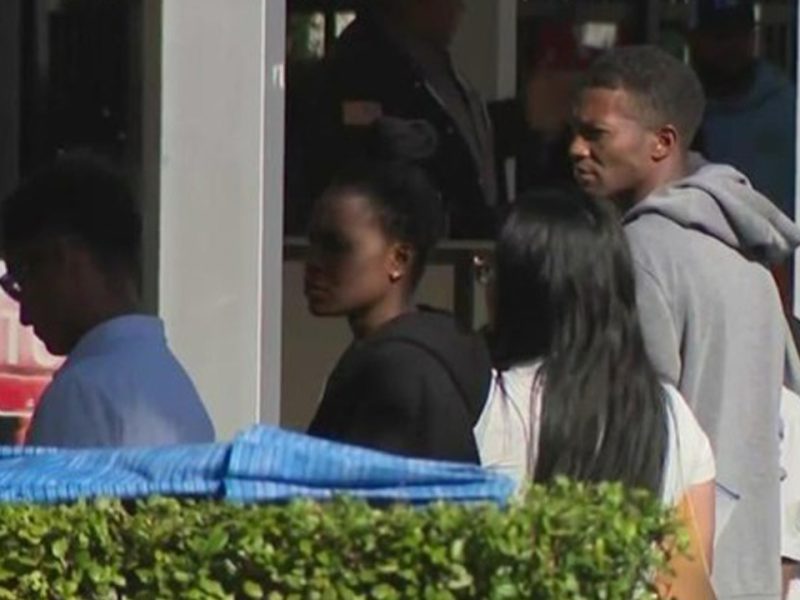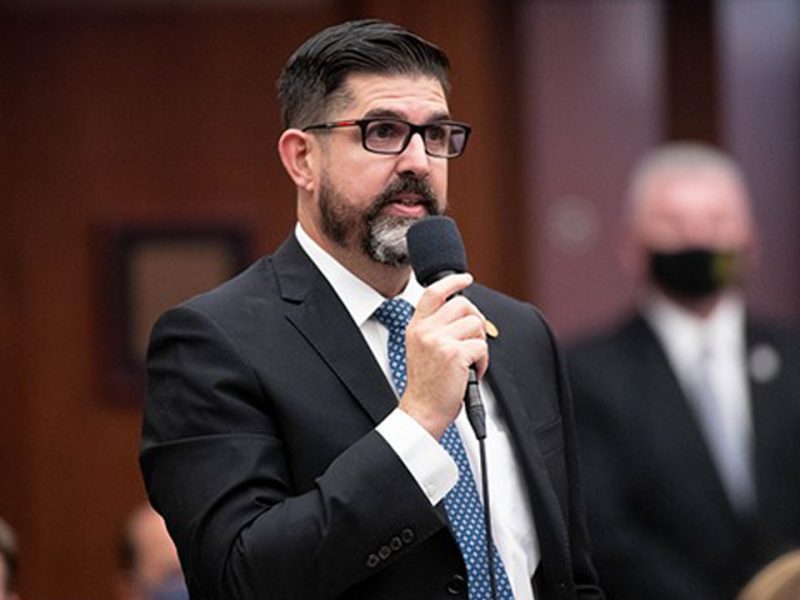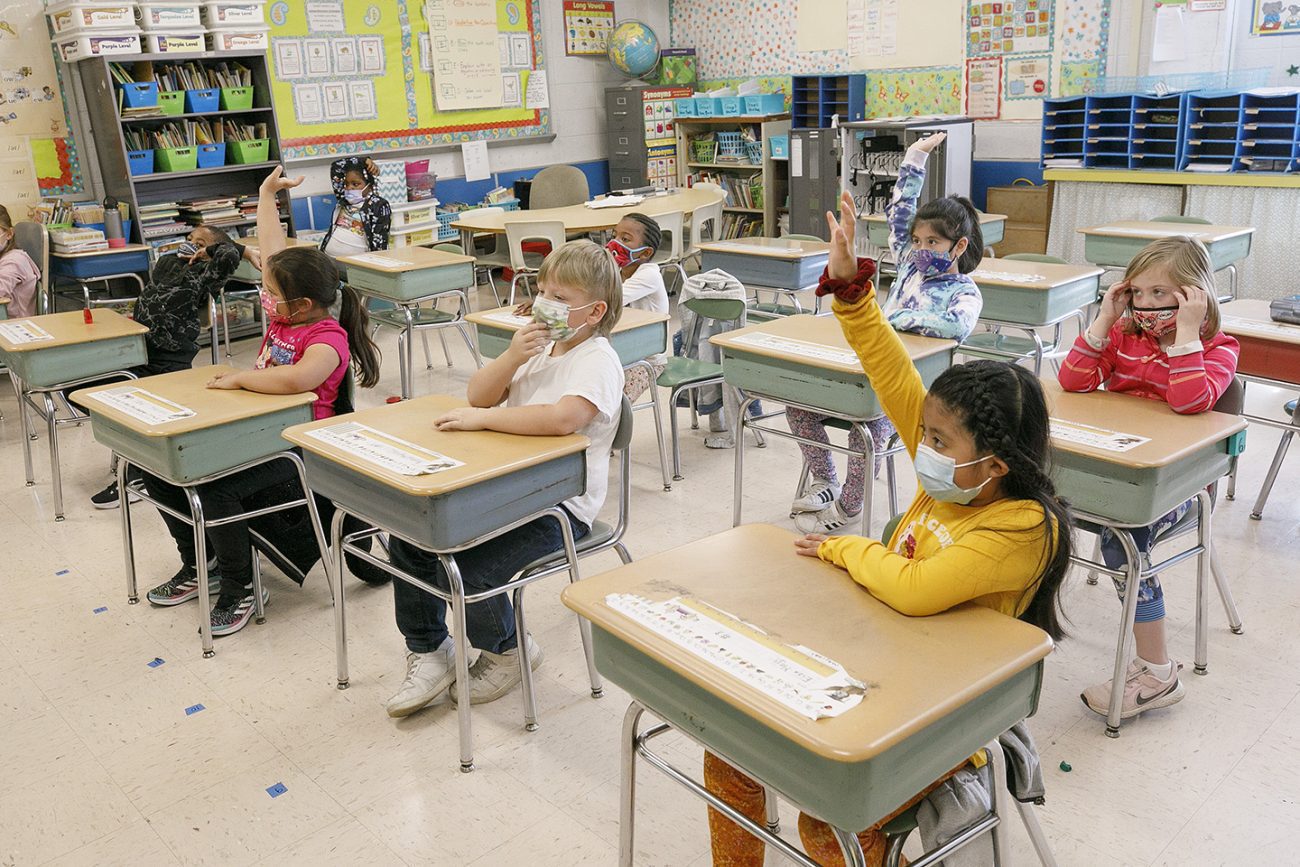
Higher Student Morale Linked to In-Person Instruction, Survey Shows
Education Week | By Holly Kurtz | October 14, 2021
Student morale is up, especially in schools that have held more in-person learning, according to the perceptions of educators in a new survey.
That is one of the key findings of the EdWeek Research Center’s monthly survey focusing on the impact of COVID-19 on K-12 education, and other timely topics.
This month’s nationally representative survey—which also examined district travel restrictions and vaccine mandates—was administered online Sept. 29 to Oct. 8 to 939 educators, including 487 teachers, 175 principals, and 277 district leaders.
Educators see student morale improving since last spring
Educator perceptions of student morale ticked upward over the summer, tying an all-time high since the EdWeek Research Center first started tracking this metric in March 2020.
Fifty-eight percent of teachers and district leaders still say student morale today is lower than it was pre-pandemic. While that might not sound positive, it is an improvement over the last time the EdWeek Research Center asked about morale in April, when 67 percent of district leaders and teachers perceived that student morale was worse than it was prior to the pandemic.
The last time student morale was this high was in August 2020, when 58 percent of teachers and district leaders said student morale was lower than pre-pandemic. (Comparisons over time exclude principals who responded to surveys because that group was not surveyed when the EdWeek Research Center first started tracking morale.)
Perceptions of student morale are more positive among teachers, principals, and district leaders in districts that provided more in-person instruction last school year. In districts that spent most of 2020-21 doing in-person instruction, 49 percent of teachers, principals, and district leaders said that student morale was lower than pre-pandemic. That perception was worse (63 percent) among teachers and administrators in districts where students spent most of last school year learning from home and also among those in districts that mostly used a hybrid model combining in-person and remote instruction (59 percent).
Percent of teachers and district leaders who say morale is lower now than pre-pandemic for the following groups
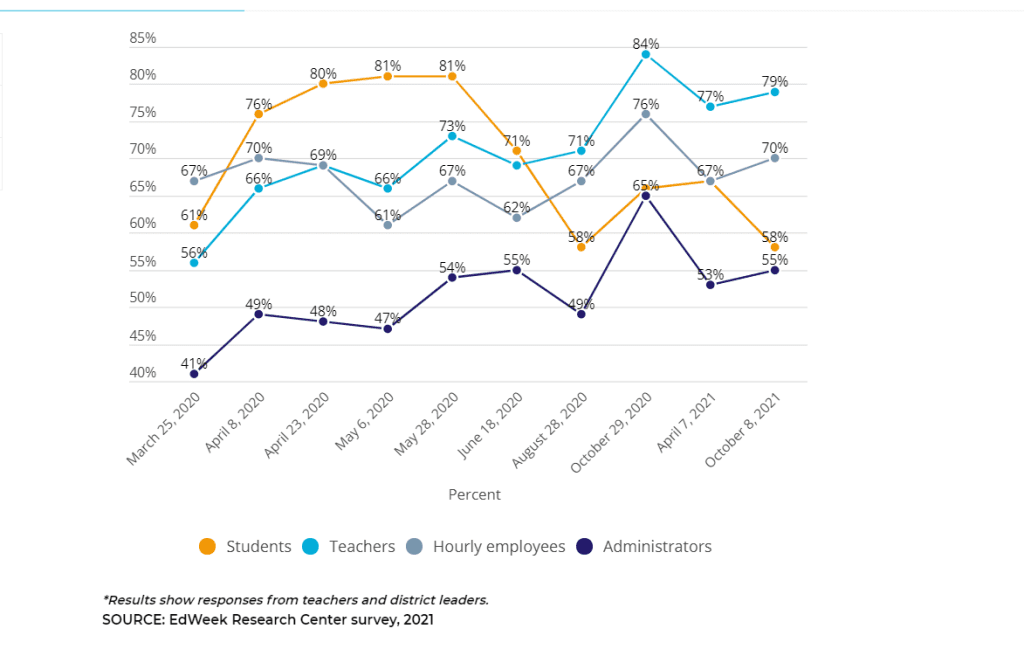
Student morale is also better in elementary than secondary schools. Forty-nine percent of elementary teachers and principals say student morale has declined since prior to the pandemic, compared with 63 percent of middle school educators, and 68 percent at the high school level. In addition, principals are twice as likely as teachers to say student morale is better now than prior to the pandemic (22 percent versus 11 percent, respectively). District leaders fall between those perceptions, with 16 percent saying that student morale has improved.
The morale of teachers, administrators, and hourly school employees has remained about the same since April, according to the teachers and district leaders surveyed.
Districts slow to adopt vaccine mandates
As more employers across the nation adopt COVID-19 vaccine mandates, school districts remain cautious about taking that approach.
Sixty-three percent of school and district leaders say they do not require employee vaccinations, down only slightly from 67 percent a month earlier. And 85 percent do not require any students to be vaccinated, even those old enough to qualify. That’s also down but only slightly from 88 percent last month.
Which of the following best describes your district or school’s current approach to COVID vaccinations for employees?


Although their rate of adoption hasn’t changed much since last month, employee vaccine mandate rates do vary significantly by location, by district demographics, and by the amount of in-person instruction that has occurred during the pandemic. Mandates are reported more frequently by administrators in urban and suburban areas, in the Northeastern and Western United States, in districts where students of color comprise the majority of the enrollment, and in districts that spent most of last school year providing remote or hybrid instruction. They are reported less frequently by leaders in rural areas, in the Southern and Midwestern United States, in districts that serve larger shares of white students, and in districts that mostly provided in-person instruction last school year.
Student vaccine mandates are more frequently reported by administrators in urban districts and in districts where students of color comprise the majority of the enrollment.
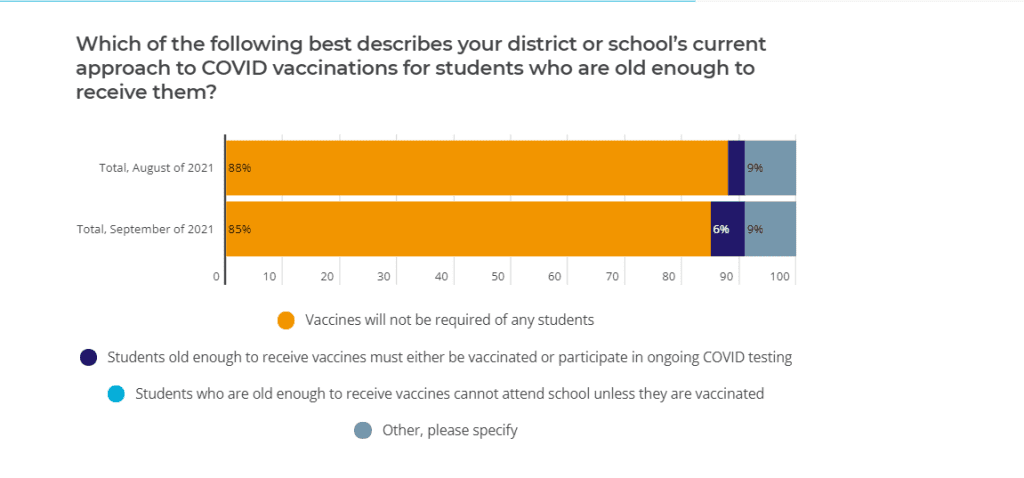

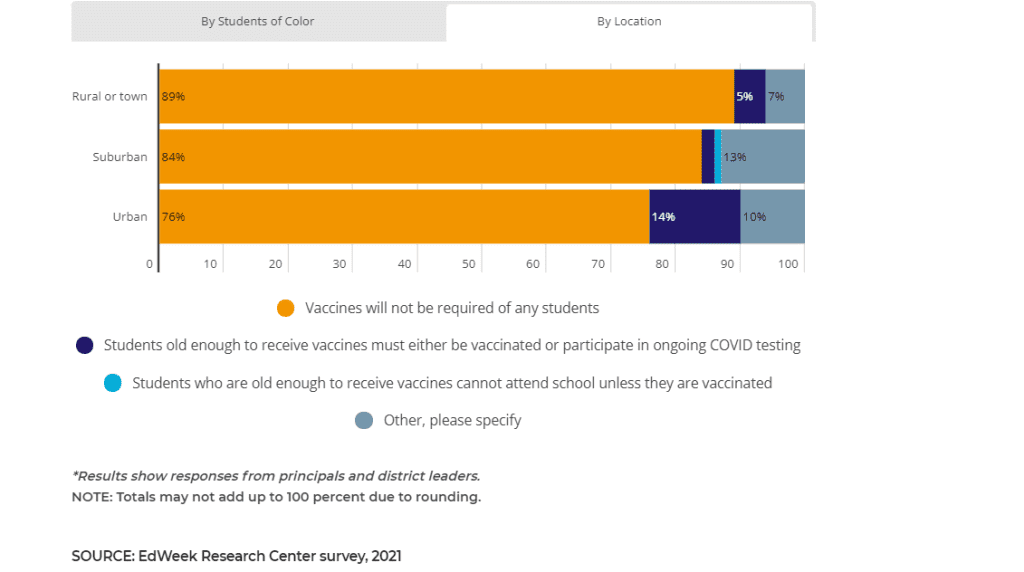
1 in 5 administrators face freezes on travel expenses
Travel may have resumed for some sectors, but it’s still a fraught issue for school districts.
Nearly 1 in 5 principals and district leaders say their districts have implemented spending freezes on travel.
That rises to 32 percent among administrators in the largest school districts that serve 10,000 students or more. By contrast, 16 percent of leaders in districts with enrollments under 10,000 say they have implemented travel freezes.
Travel spending freezes are reported less frequently by administrators in districts where learning was in person for the majority of the prior school year (18 percent) than by those where learning was mostly remote or hybrid (39 percent).




